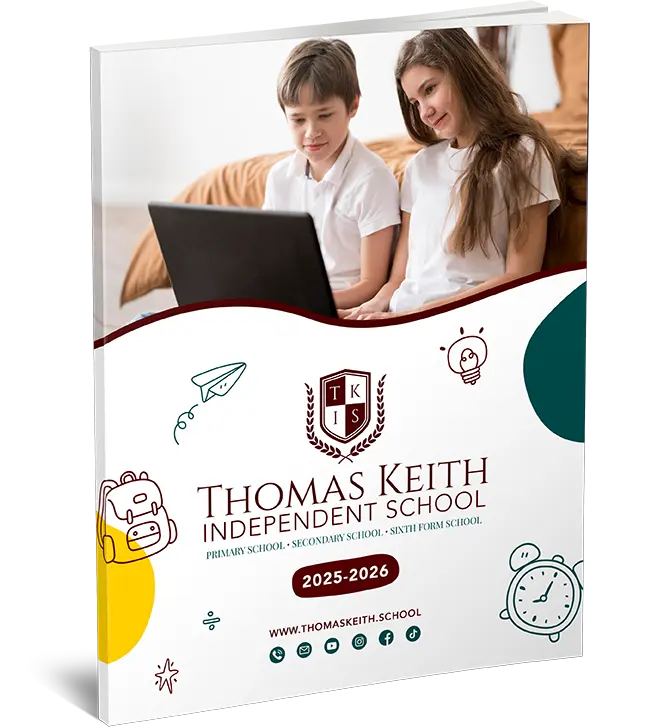Guide to Year 1 Writing Activities
A Manual for Helping Young Learners Develop Their Creative Writing Skills.
Since Year 1 is frequently a child’s first formal writing experience, it represents an exciting time in their language development. At this age, children are starting to express themselves artistically with short stories, descriptions, and introspective thoughts in addition to learning how to write letters and words. First-year students can progress from writing simple sentences to experimenting with basic creative writing, which helps them develop their vocabulary, understand sentence structure, and use their imagination.
The development of fundamental literacy skills is emphasised in schools like the Thomas Keith Online Independent School, which places particular emphasis on creative writing as a way for children to comprehend and love the writing process. To help parents and teachers support young writers, this guide explores a variety of Year 1 writing exercises, including both structured and creative activities.
The Value of Writing in the First Year
In Year 1, writing exercises are essential to a child’s overall growth. The main goals are to promote creativity, improve fine motor abilities, and teach the fundamentals of storytelling and sentence structure. Early participation in these activities lays a strong basis for future literacy development. Incorporating creative writing exercises also gives the children a safe, encouraging space to explore their ideas and thoughts.
Types of Writing Assignments for Year 1
1. Simple Sentence Structure
One of the first steps in Year 1 writing is learning how to compose simple sentences. At this age, nouns, verbs, and adjectives are paired to teach children how to create sentences. Examples include writing about familiar objects, loved ones, or everyday experiences. For example, children might write ‘The sun is bright,’ or ‘I like my cat.’
Parents and educators can make this exercise more engaging by encouraging children to illustrate their ideas with drawings and describe them using phrases such as ‘I see,’ ‘I am,’ and ‘I have.’
An example of an activity:
Write about the animal you love the most. Write a phrase describing it after drawing it. ‘This is a ____. It’s really ____’.
2. Writing Exercises with Guidance
Through guided writing, children can acquire vocabulary and sentence structure in a safe environment. Teachers can help children create sentences and even brief paragraphs by posing specific questions or subjects to them.
As an example, a guided exercise could invite students to write about their day using the following prompts:
‘Today, I went to…’
‘I played with…’
‘I ate a…’
While allowing for creativity, these prompts promote organised thought.
3. Writing Descriptively
Children can learn about adjectives and sensory details through descriptive writing. Objects, settings, or even people from the novels they are reading in class can be the subject of an activity.
Children might be asked to describe their favourite toy in a descriptive writing exercise, for instance:
‘I have a red toy vehicle. It moves quickly.
‘My teddy bear is soft and brown’.
In addition to increasing vocabulary, descriptive tasks improve observational abilities.
An example of an activity
Describe today’s weather. Is it raining, overcast, or sunny? How do you feel about it?
4. Year 1 Creative Writing and Storytelling
For Year 1, creative writing exercises are meant to be straightforward but captivating. One of the best ways to help the children to appreciate writing is to encourage them to tell stories. To stimulate creativity, these activities frequently use visual aids like narrative cards or drawings.
An example of a story prompt
Consider yourself a bird, where would you take a plane? From the sky, what would you observe?
Children are encouraged to write a few phrases outlining their imagined voyage and are allowed to use their imaginations with this topic.
5. Composing Cards and Letters
One interactive method to get Year 1, children involved in significant writing assignments is to have them write letters and cards. Writing a ‘Thank You’ card or a letter to a friend can serve as this exercise. It aids in their comprehension of the function of writing as well as the format of letters, including addressing the recipient and concluding.
6. Activities for Labeling
Labelling is a fundamental writing ability that aids children in making the connection between words and objects. Children are frequently asked to identify various components of pictures. In an image of a house, for instance, students could label the roof, door, and window. This exercise introduces fundamental words and expands vocabulary.
7. Story Starters and Creative Writing Prompts
One of the best ways to encourage Year 1 creative writing is to use creative prompts. Fun and creative prompts like ‘If I were a superhero…’ and ‘My magic pet would be…’ turn writing into an experience.
Thomas Keith Online Independent School uses these prompts to foster creativity and ensure the exercises remain engaging and diverse.
8. Writing Poetry and Rhymes
Teaching linguistic patterns can be enjoyable when poetry is introduced, especially through rhyming exercises. Youngsters might begin with easy rhymes and work their way up to brief verses. Early language development depends on vocabulary and phonological awareness, both of which can be improved by poetry.

An Example of a Rhyming Exercise
‘Consider words that rhyme with ‘cat.’ Try using one of these words to form a phrase.
Techniques for Promoting Writing in the First Year
Make the Environment Positive:
The writing environment should be encouraging and positive. Children are encouraged to try without fear of failure when efforts are praised rather than just correctness.
Make use of props and visual aids:
Toys, photographs, and story cards can all be used as great props to encourage creativity and offer visual assistance.
Encourage writing daily
Children can feel more at ease with writing with a little daily practice. This could involve a brief journal entry describing an action or observation.
Use Games to Make Writing Fun:
To make writing fun, include activities like narrative dice, rhyming games, and word searches. This keeps the level of engagement high.
Writing Models:
By demonstrating how to construct sentences and explaining their thought processes, educators and parents can serve as role models for writing. They could write, ‘Today, I feel happy because…’ and explain their word choice, for instance.

A Sample Writing Plan for Parents and Teachers in Year 1
Week: One
Type of Activity: Writing Sentences
Goal: Describe the fundamentals of sentence construction.
Week: 2.
Type of Activity: Writing Descriptively
Goal: Adjectives can be used to describe scenes or objects.
Week: 3.
Type of Activity: Telling Tales
Goal: Encourage imaginative expression by using short stories.
Week: 4.
Type of Activity: Writing Poetry
Goal: Introduce elementary poetry and rhyme.
Week: 5.
Type of Activity: Writing Cards and Letters
Goal: Teach the purpose and format of letters.
Week:6.
Type of Activity: Labeling
Goal: Labeling pictures will help you expand your vocabulary.
Week: 7.
Type of Activity: Story Prompts and Starters
Goal: Use open-ended questions to stimulate creativity.
Typical Obstacles in First-Year Writing
Grammar and Spelling:
Spelling is sometimes a challenge for young children. At this point, using phonetic spelling is advised, with practice progressively increasing accuracy.
Motor Abilities:
Writing might be physically difficult in Year 1 due to weak fine motor skills. These muscles can be strengthened using colouring and tracing exercises.
Keeping Your Attention:
Young children may find it difficult to focus when writing. They can maintain attention by dividing work into smaller, more manageable chunks.
The Part Parents and Schools Play in First-Year Writing
The collaborative method that Thomas Keith Online Independent School emphasises involves active participation from both parents and teachers. While parents are urged to establish a home atmosphere that encourages consistent writing practice, teachers set structured tasks.

In conclusion
The foundation for fundamental reading abilities is laid by writing in Year 1. Young children can develop a love of writing, expand their vocabulary, and become more comfortable expressing their ideas through a variety of imaginative and planned activities. Schools like Thomas Keith Online Independent School offer great support for this crucial stage of language development by combining organised instruction with creative prompts.
FAQs
1. What can I do if my child struggles with writing?
A: Avoid dwelling on errors and begin with quick, enjoyable activities. Acknowledge their efforts and give them frequent chances to practice in a laid-back environment.
2. Is it acceptable to make spelling errors in Year 1?
A: At this point, phonetic spelling is common. Encourage your child to write without concern for errors; with practice, accuracy will increase.
3. How frequently should my child write?
A: Daily, brief practice sessions are most effective. Writing a line or two about their day can suffice for these.
4. What should I do if my child struggles with letter formation?
A: Try playdough, colouring, and tracing—activities that improve fine motor abilities. These activities help strengthen the fine motor skills needed for writing.
For young students, Year 1 writing may be a joyful voyage of exploration and expression if these rules and exercises are followed.




